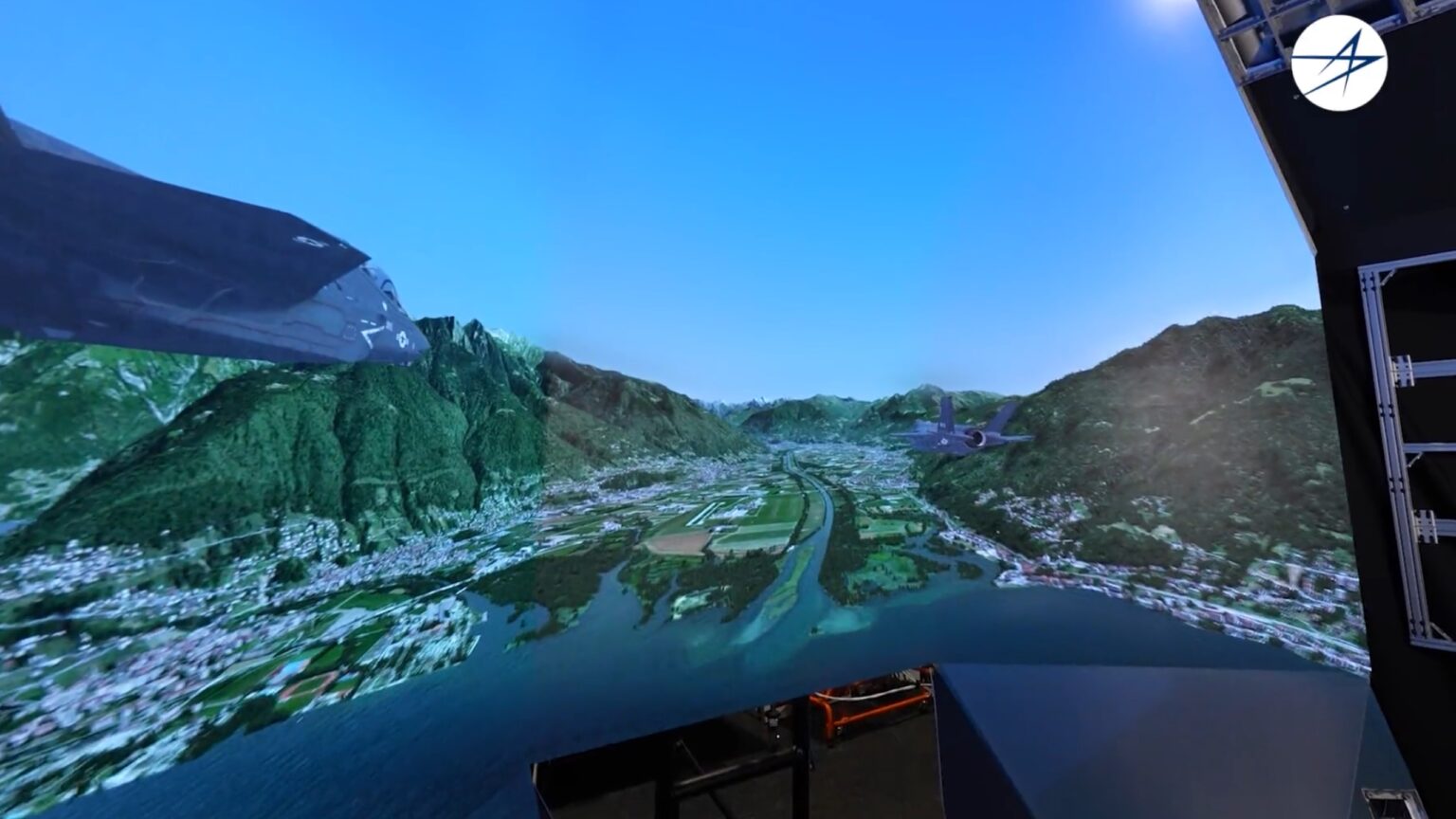Lockheed Martin has introduced a suite of metaverse-based training solutions, revolutionizing military preparedness for the 21st century.
This move encompasses a range of systems, including the Amorphic Appearance Zero-Projector (AMAZE) visual display, Prepar3D simulation software, SIMRES live training technology, the Battle Staff Trainer (BST) for multi-domain wargaming, and comprehensive cyber defense training. According to reports, these tools collectively enhance military capabilities by simulating complex, multi-domain scenarios, offering realism and interactivity in training environments.
Pilot training with AMAZE
Lockheed Martin’s AMAZE technology is a significant departure from traditional projector-based systems, offering an enhanced training experience with its high-contrast, bright displays.
Prepare to be amazed.
The Amorphic Appearance Zero-Projector Environment visual display system (AMAZE) is reimagining the way pilots can immerse themselves in training. #IITSEC pic.twitter.com/uTlLTb6tYt
— Lockheed Martin (@LockheedMartin) November 21, 2023
Prepare to be amazed.
The Amorphic Appearance Zero-Projector Environment visual display system (AMAZE) is reimagining the way pilots can immerse themselves in training. #IITSEC pic.twitter.com/uTlLTb6tYt
— Lockheed Martin (@LockheedMartin) November 21, 2023
AMAZE leverages LED modules and a light relay, focusing on strategic advantages while reducing the need for maintenance, hardware footprint, and lifecycle costs. This technology marks a new era in cost-effective and sustainable immersive pilot training.
Multi-domain training with Prepar3D
Prepar3D, Lockheed Martin’s flagship training software, creates diverse learning scenarios across aviation, maritime, and ground domains. Its open architecture allows for integrating third-party and customer-generated content, ensuring that training keeps pace with evolving threats.
Realistic force-on-force training with SIMRES
Addressing the limitations of laser-based training systems, Lockheed Martin’s SIMRES technology offers a more realistic approach to live training. Using sensors to track the location and orientation of service members and weapons, SIMRES maps these elements in a virtual simulation, accurately calculating ballistics and the effects of firing events.
This move allows service members to act as avatars in a sophisticated, game-like environment, enhancing training realism significantly.
Wargaming and simulation with BST
The Battle Staff Trainer (BST) is Lockheed Martin’s response to the need to replicate various battlespaces. BST’s multi-domain operations capability allows militaries to prepare for future scenarios through realistic and customizable wargaming events. This training tool enables command and staff to make smarter, quicker decisions, a crucial factor in modern warfare.
Cyber defense range and readiness training
As cyber threats evolve, Lockheed Martin’s Cyber Defense Range and Readiness Training offers vital training for service members to operate effectively in cyber-contested environments. This training supports various platforms, including surface, undersea, and ground systems, both autonomous and crewed. It focuses on hardening cyber systems, equipping cyber warriors, and disseminating threat intelligence, thus maturing military cyber operations.
A new training frontier
These developments by Lockheed Martin align with the broader trend of integrating metaverse technologies in military training. For instance, the U.S. Air Force has been simulating entire military campaigns in the metaverse through augmented reality training technology developed by Red 6. This approach provides richer training experiences, allowing campaign-level exercises incorporating national command authority down to tactical operators.
Moreover, a consortium of startups and defense academics in Germany has been testing AI weapon systems in the metaverse. Their project, GhostPlay, utilizes advanced AI algorithms to simulate combat scenarios with high realism, incorporating detailed environmental data and weapon performance metrics.
In the U.S., the Marine Corps’ Project Tripoli is another example of metaverse utilization in military training. This project combines live training with simulation and augmented reality, providing Marines with a comprehensive and realistic combat experience.
Lockheed Martin’s foray into metaverse-based military training solutions marks a stride in modernizing military preparedness. By leveraging advanced technologies to create immersive, realistic training environments, Lockheed Martin sets a new standard in military training, equipping armed forces with the tools to face the complex challenges of modern warfare.









 and then
and then